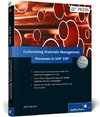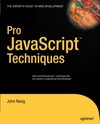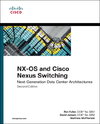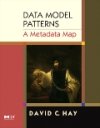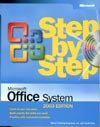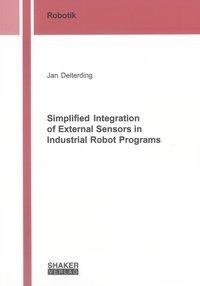
Simplified Integration of External Sensors in Industrial Robot Programs
The integration of external sensors like cameras or force/torque sensors into industrial robots is one important aspect of industrial robot design in order to make them accessible for a wider range of businesses and applications. These sensors enable the... Viac o knihe
Produkt je dočasne nedostupný
42.94 €
bežná cena: 48.80 €
O knihe
The integration of external sensors like cameras or force/torque sensors into industrial robots is one important aspect of industrial robot design in order to make them accessible for a wider range of businesses and applications. These sensors enable the robot to react flexibly to changes in the workspace. This is difficult for two reasons: (1) The integration of the sensor into the source code of the robot program is by no means trivial. Sensor data must be processed and checked for the information contained within. The robot must use this information correctly. (2) The processing of sensor data during execution of the robot task is complex and prolongs the execution time. This is why external sensors are only rarely used in industrial robots; unless absolutely necessary. Our works aims at simplifying the task of sensor integration into an existing robot program for industrial handling tasks. The work targets persons, which are experts neither in robot programming nor sensor data processing. We are also interested in how far automated sensor data processing can be optimized in order to reduce the execution time as far as possible. In a first step we examine sensor signals according to the information contained in it. Signals are classified into two groups: Geometric properties and information about the state of an object. Based on this we create a programming paradigm in which sensor data processing is not integrated into the robot program. Instead it is coupled to positions in a positional database. This allows for a separation of instructions to move the robot and instructions regarding sensor data processing. We further examine two possible changes in the workspace that cannot be compensated by the robot in only one motion. (1) Search motions require multiple requests of sensor data until the goal position has been found. In this work we show how the use of probability based search maps can speed up the time required for the search significantly. (2) Objects may drift in the workspace during multiple executions of the task. We show how drifts can be recognized and compensated using a time series of the object's position built in previous executions. Both extensions are encapsulated in the programming paradigm. This further simplifies the effort to integrate an external sensor into a robot program. Finally, we evaluate our programming paradigm using examples of typical industrial handling tasks with respect to its practical use. A group of probands is asked to solve these tasks applying both the newly developed concept and once again classic robot programming. We can see that our new approach allows for a significant decrease in development time and lines of code used. In addition the new concept rated favorably among the probands in comparison to the classic approach to robot programming.
- Vydavateľstvo: Shaker Verlag
- Formát: Paperback
- Jazyk:
- ISBN: 9783844001259

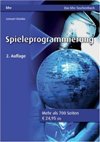
 Nemecký jazyk
Nemecký jazyk 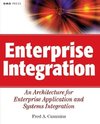

 Anglický jazyk
Anglický jazyk 
